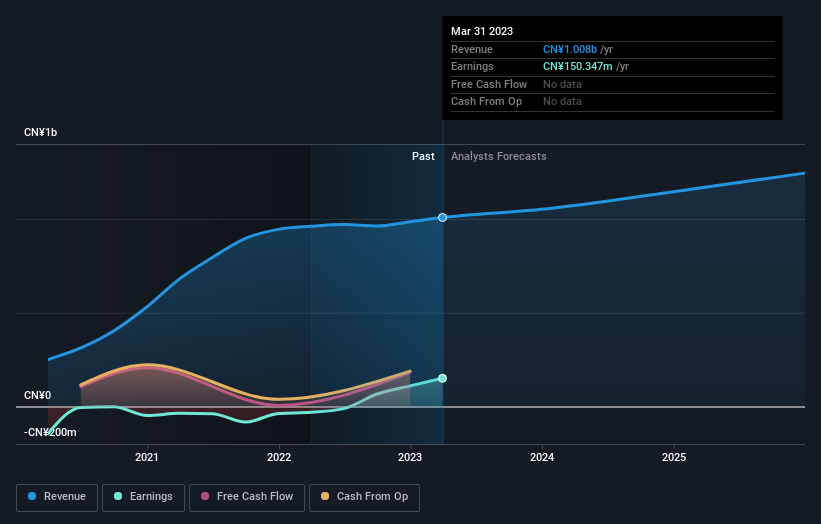With 70% ownership, iHuman Inc. (NYSE:IH) insiders have a lot at stake
Key Insights
Insiders appear to have a vested interest in iHuman's growth, as seen by their sizeable ownership
55% of the company is held by a single shareholder (Yufeng Chi)
To get a sense of who is truly in control of iHuman Inc. (NYSE:IH), it is important to understand the ownership structure of the business. And the group that holds the biggest piece of the pie are individual insiders with 70% ownership. Put another way, the group faces the maximum upside potential (or downside risk).
So it follows, every decision made by insiders of iHuman regarding the company's future would be crucial to them.
Let's delve deeper into each type of owner of iHuman, beginning with the chart below.
See our latest analysis for iHuman
What Does The Institutional Ownership Tell Us About iHuman?
Many institutions measure their performance against an index that approximates the local market. So they usually pay more attention to companies that are included in major indices.
As you can see, institutional investors have a fair amount of stake in iHuman. This can indicate that the company has a certain degree of credibility in the investment community. However, it is best to be wary of relying on the supposed validation that comes with institutional investors. They too, get it wrong sometimes. If multiple institutions change their view on a stock at the same time, you could see the share price drop fast. It's therefore worth looking at iHuman's earnings history below. Of course, the future is what really matters.
We note that hedge funds don't have a meaningful investment in iHuman. From our data, we infer that the largest shareholder is Yufeng Chi (who also holds the title of Top Key Executive) with 55% of shares outstanding. Its usually considered a good sign when insiders own a significant number of shares in the company, and in this case, we're glad to see a company insider play the role of a key stakeholder. For context, the second largest shareholder holds about 9.8% of the shares outstanding, followed by an ownership of 6.1% by the third-largest shareholder. Interestingly, the third-largest shareholder, Peng Dai is also a Member of the Board of Directors, again, indicating strong insider ownership amongst the company's top shareholders.
While it makes sense to study institutional ownership data for a company, it also makes sense to study analyst sentiments to know which way the wind is blowing. While there is some analyst coverage, the company is probably not widely covered. So it could gain more attention, down the track.
Insider Ownership Of iHuman
While the precise definition of an insider can be subjective, almost everyone considers board members to be insiders. Company management run the business, but the CEO will answer to the board, even if he or she is a member of it.
Most consider insider ownership a positive because it can indicate the board is well aligned with other shareholders. However, on some occasions too much power is concentrated within this group.
Our information suggests that insiders own more than half of iHuman Inc.. This gives them effective control of the company. Given it has a market cap of US$159m, that means they have US$111m worth of shares. Most would be pleased to see the board is investing alongside them. You may wish todiscover (for free) if they have been buying or selling.
General Public Ownership
The general public, who are usually individual investors, hold a 20% stake in iHuman. While this size of ownership may not be enough to sway a policy decision in their favour, they can still make a collective impact on company policies.
Next Steps:
It's always worth thinking about the different groups who own shares in a company. But to understand iHuman better, we need to consider many other factors.
I always like to check for a history of revenue growth. You can too, by accessing this free chart of historic revenue and earnings in this detailed graph.
Ultimately the future is most important. You can access this free report on analyst forecasts for the company.
NB: Figures in this article are calculated using data from the last twelve months, which refer to the 12-month period ending on the last date of the month the financial statement is dated. This may not be consistent with full year annual report figures.
Have feedback on this article? Concerned about the content? Get in touch with us directly. Alternatively, email editorial-team (at) simplywallst.com.
This article by Simply Wall St is general in nature. We provide commentary based on historical data and analyst forecasts only using an unbiased methodology and our articles are not intended to be financial advice. It does not constitute a recommendation to buy or sell any stock, and does not take account of your objectives, or your financial situation. We aim to bring you long-term focused analysis driven by fundamental data. Note that our analysis may not factor in the latest price-sensitive company announcements or qualitative material. Simply Wall St has no position in any stocks mentioned.
Join A Paid User Research Session
You’ll receive a US$30 Amazon Gift card for 1 hour of your time while helping us build better investing tools for the individual investors like yourself. Sign up here

 Yahoo Lifestyle
Yahoo Lifestyle 


